
Dak To Industrial Park
- Investor: Investment and Development Company Infrastructure Kon Tum Economic Zone
- Price: 50 USD/m2
- Area: 150 Ha
Located in the Central Highlands of Vietnam, Kon Tum province is a thriving industrial center with a rich cultural heritage. Famous for its strategic location and rich natural resources, Kon Tum has emerged as a prominent destination for industrial development. Kon Tum province boasts a diversified economy, encompassing sectors like agriculture, mining, and manufacturing. This presents ample opportunities for investors and a favorable business environment. In this article, we will provide an overview of Kon Tum province, emphasizing its industrial importance, cultural heritage, and key industries that drive economic growth.
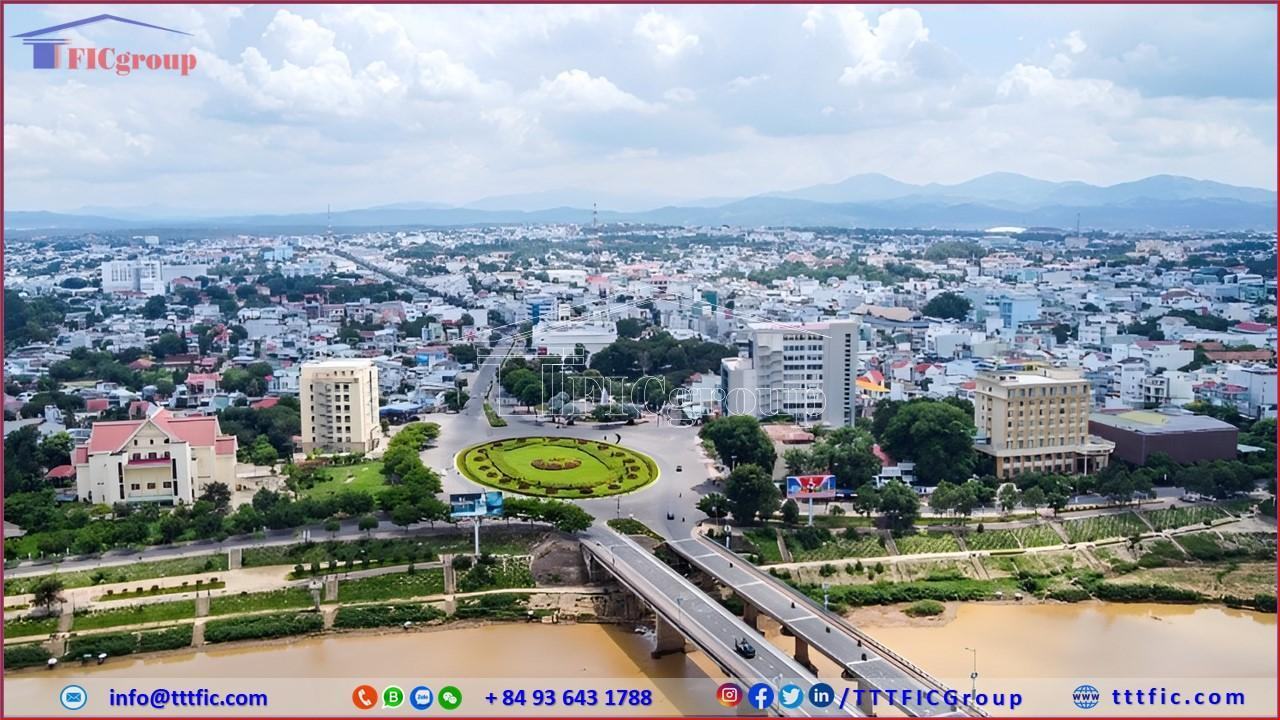
Kon Tum City – Kon Tum Province – Vietnam – TTTFIC Group
Kon Tum is a highland province located in the northern part of the Central Highlands region, bordering other provinces. It is situated between 107020’15” to 108032’30” east longitude and 13055’10” to 15027’15” north latitude.
With a natural area of 9,676.5 square kilometers, Kon Tum occupies 3.1% of the total national area. Kon Tum province shares a border of 142 kilometers with Quang Nam province to the north. To the south, it shares a 203-kilometer border with Gia Lai province. The eastern border, measuring 74 kilometers, is shared with Quang Ngai province. To the west, Kon Tum province shares a border of 280.7 kilometers with Laos and Cambodia.
The strategic location of Kon Tum is of utmost importance, as it presents both opportunities and significant responsibilities in the context of integration and development in the entire Central Highlands region.
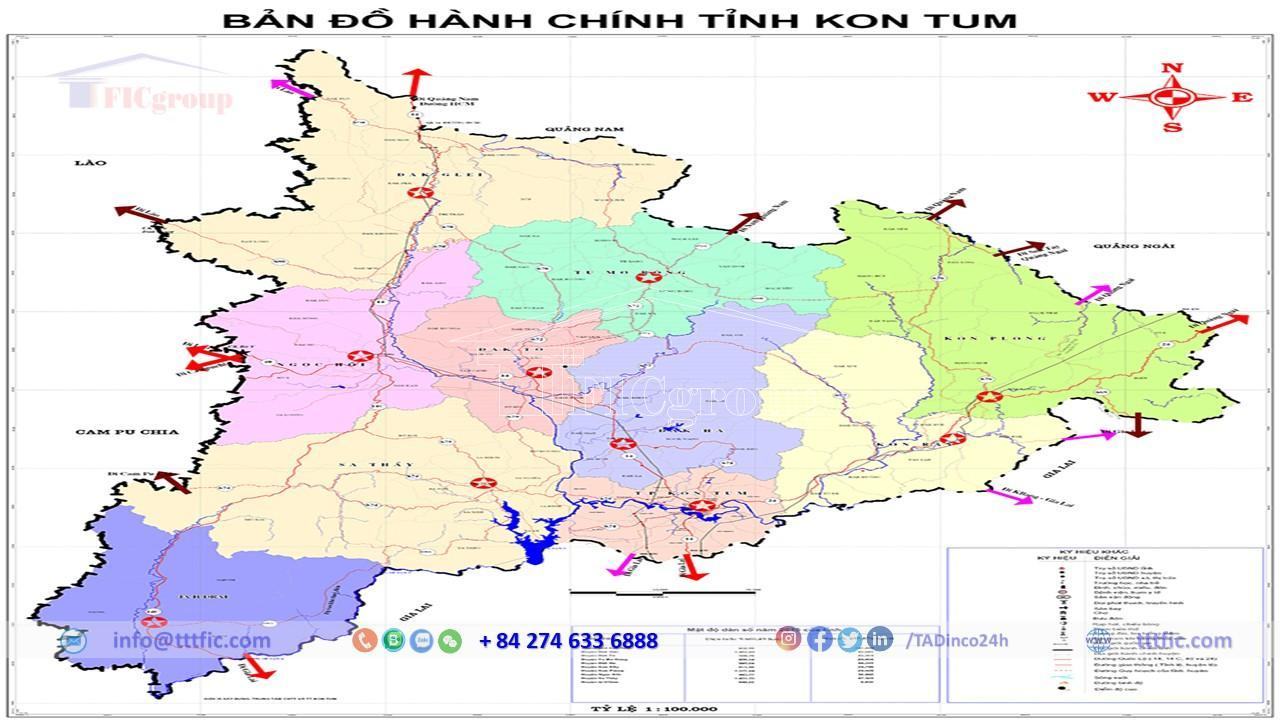
Administrative map of Kon Tum Province – TTTFIC Group
A diverse natural landscape characterizes Kon Tum province. The majority of the province is located in the western part of the Truong Son range, featuring hills, mountains, and valleys. The hills and mountains cover about 2/5 of the province, with steep slopes of 150 or more. The northwestern region concentrates the high mountainous terrain, while the hills slope towards the west and southwest, predominantly in Sa Thay district.
The province is also home to valleys that follow the course of the Po Ko River, gradually lowering towards the south. Undulating hills and flat areas like the Kon Tum urban area intersperse these valleys. Additionally, Kon Tum is home to the Konplong plateau, which is nestled between the An Khe and Ngoc Linh ranges. The plateau spans elevations ranging from 1,100 to 1,300 meters.
Kon Tum falls within the highland tropical monsoon climate zone, characterized by an average annual temperature ranging from 22 to 23°C. The province experiences a distinct rainy season from April to November and a dry season from December to March. The average annual rainfall is around 2,121mm, with the highest rainfall occurring in August. The prevailing winds differ between the dry and rainy seasons, with the northeast wind prevailing during the dry season and the southwest wind during the rainy season.
Two major river systems, the Ba River and the Sê San River, traverse the province. Originating from the mountainous region of Konklang, the Ba River meanders through Gia Lai and Phu Yen provinces before ultimately emptying into the East Sea. The Sê San River system includes the Đắk Bla, Đắk Psi, and Đắk Pôcô rivers.
Diverse land resources characterize Kon Tum province. Most of the area is red and yellow soil, accounting for 50.3% of the natural land area. Yellow-brown hilly soil accounts for 45.48% of the land area, the rest includes alluvial soil, degraded gray soil, valley soil, eroded soil, gravel, ponds and rivers.
Forests in Kon Tum are abundant, accounting for 50% of the province’s natural land area. The forest is mainly primary forest and has precious wood species such as rosewood, incense, po mu, and pine. The forested land area in Kon Tum covers about 621,450 hectares, abundant in medicinal forest products. These include Ngoc Linh ginseng, pine needles, pine resin, rattan, cotton buds, money code, marigold, royal jelly, he Shou Wu. Designation of protected areas such as Chu Mo Ray Nature Reserve reflects the province’s commitment to nature conservation. Endangered species such as red elephants, deer, cane, and storks find a habitat in this reserve, renowned for its rich biodiversity.
Regarding minerals, Kon Tum has considerable resources. A few districts concentrate primary and secondary gold mines, while specific areas host bauxite mines. Some communes have an abundance of peat, while some districts contain black gablopioxen rock. The province also has abundant mineral water and reserves of sand, gravel and construction stone to meet construction needs.
Kon Tum province in Vietnam has diverse topography, rich land resources and extensive forest cover. The province also has high value mineral mines. These natural conditions contribute to its position as a dynamic industry-agriculture-forestry sector. The province’s strategic location and abundant natural resources contribute to its significant role in the development and integration of the Central Highlands. This positions the province for a promising future of sustainable and economic growth.
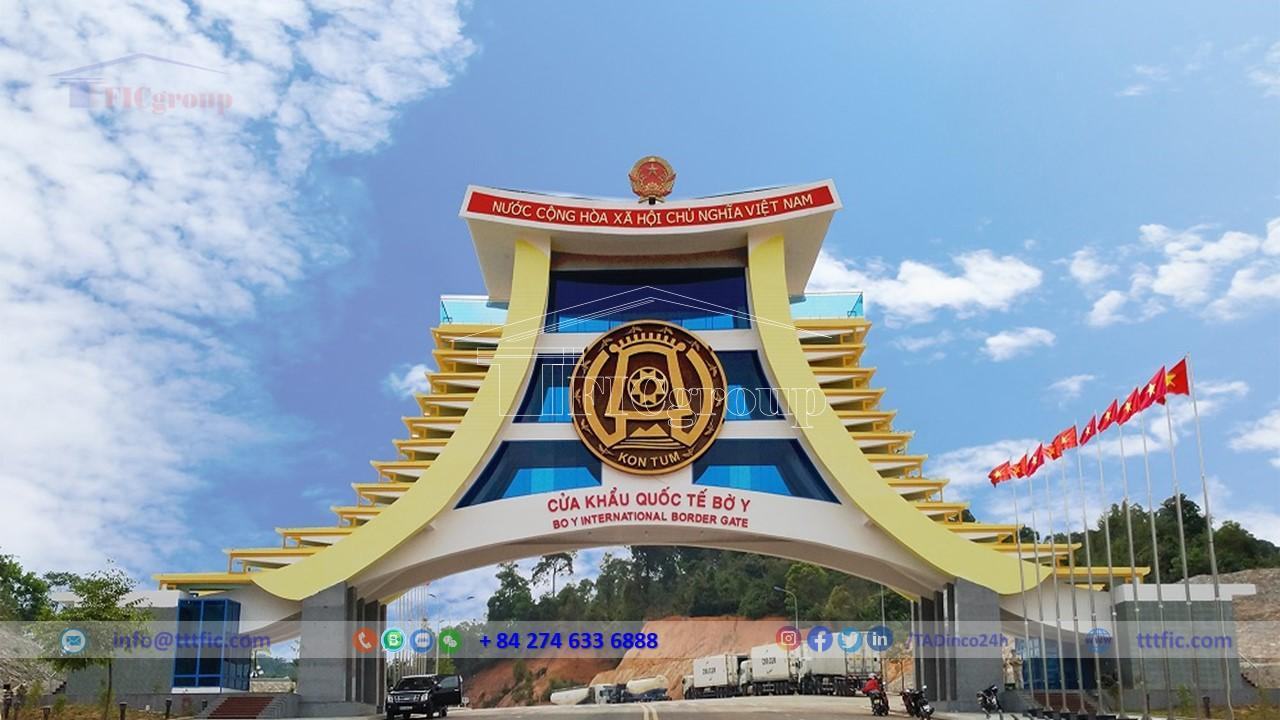
Bo Y International Border Gate – Kon Tum Province – Vietnam – TTTFIC Group
Administrative Units:
Kon Tum province consists of 10 administrative units, including 1 city (Kon Tum City) and 9 districts: Dak Ha, Dak To, Ngoc Hoi, Dak Glei, Sa Thay, Tu Mo Rong, Kon Ray, Kon Plong, and Ia H’Drai.
Population:
As of 2014, the population of Kon Tum province reached nearly 484,200 people, with a population density of 50 people per square kilometer. Kon Tum is home to 25 ethnic groups, with ethnic minorities accounting for over 53% of the population. There are 6 ethnic groups with small populations who have been living in the area for a long time, including Xo Dang, Bana, Gie-Trieng, Gia Rai, Brau, and Ro Mam.
– The total state budget revenue realized in the first quarter of 2023 (as of March 15) reached 715 billion VND, equivalent to 22.0% of the central plan and 15.9% of the local plan.
– The total state budget expenditure implemented in the first quarter of 2023 (as of March 15) reached 2,578 billion VND, equivalent to 21.6% of the allocated plan.
– The investment capital implemented in the province reached an estimated 6,047.69 billion VND, an increase of 20.9%.
– The overall index of industrial production increased by 11.52%.
– The total retail sales of goods and consumer services in the province reached an estimated 8,509.1 billion VND, an increase of 16.01%.
– The Consumer Price Index (CPI) in the first quarter increased by 6.34% compared to the same period last year.
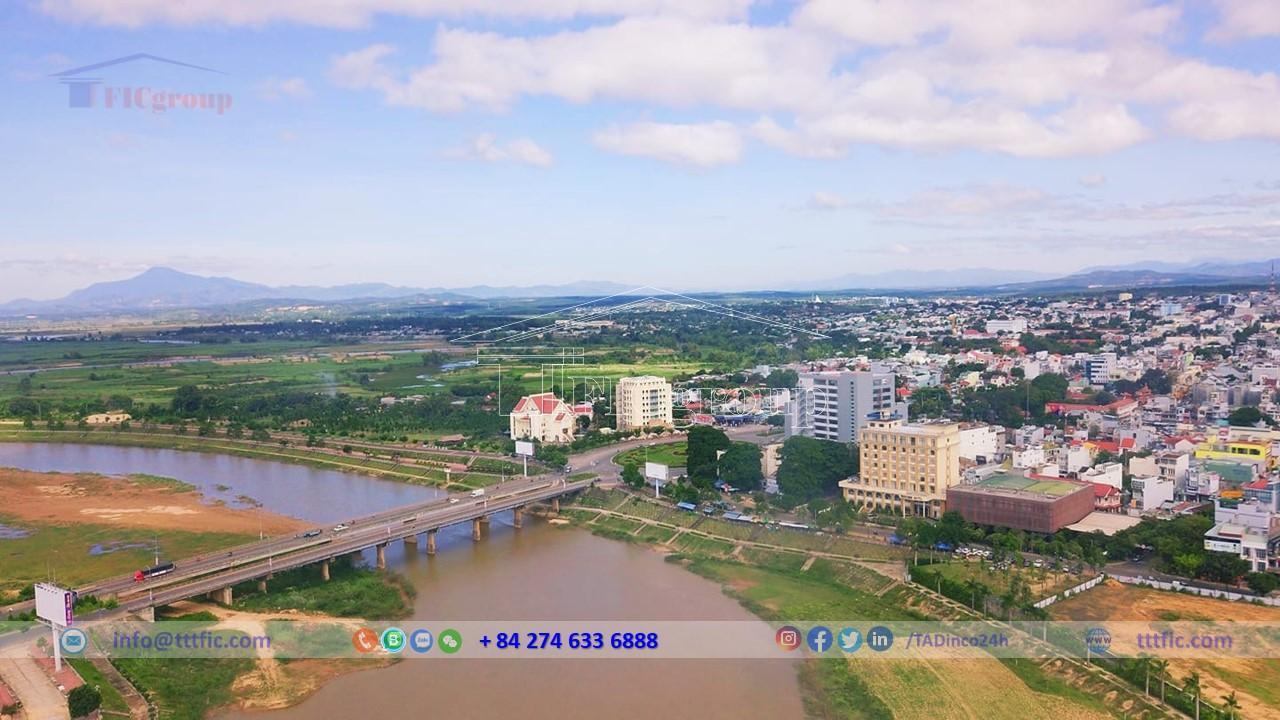
Kon Tum Province – Vietnam – TTTFIC Group
– The estimated overall index of industrial production (IIP) in the first quarter of 2023 shows an increase of 11.52% compared to the same period last year. Within this, the manufacturing and processing industries are expected to grow by 9.71%, while electricity production and distribution exhibit steady growth of 12.30%. The mining sector is projected to experience significant growth of 19.82%.
– In general, in the first quarter of 2023, several key industrial products saw a high increase in output compared to the same period last year: Electricity production reached 749.5 million kWh (+12.77%); Other construction stones reached 105,935 m3 (+19.76%); Cassava starch reached 83,210.8 tons (+11.32%); Sawn or chipped wood (excluding hardwood) reached 6,753.4 m3 (+2.43%)…
– The overall consumption index of the manufacturing and processing industry in March 2022 increased by 10.52% compared to the same period last year. The high consumption index in March was mainly due to enterprises accelerating the consumption of inventory from previous months, particularly in cassava starch production.
– The estimated inventory index of the manufacturing and processing industry as of March 31, 2022 decreased by 21.93% compared to the same period last year, indicating a stable product consumption situation. Most sectors experienced a decrease in inventory compared to the same period last year.
– Kon Tum province has made significant progress in agricultural development in 2023. The diverse topography and land resources have provided favorable conditions for the growth of the agricultural sector in the region. The province has promoted the application of advanced technologies, improved soil quality, increased production efficiency, and enhanced agricultural product quality management.
– In 2023, the agricultural sector in Kon Tum province focused on expanding cultivation areas, improving the quality of crops and livestock, and adopting modern and sustainable farming practices. Agricultural production diversified, with a focus on major crops such as coffee, pepper, rubber, pepper, rice, and fruit trees. Additionally, livestock farming has developed, concentrating on raising livestock and poultry.
– Kon Tum province prioritized the development of agricultural infrastructure, ensuring irrigation water supply and minimizing damage from natural disasters. Efforts were made to strengthen climate change adaptation capabilities as well. Moreover, agricultural enterprises actively pursued initiatives to expand markets and create favorable conditions for their operations. These efforts have played a significant role in fostering rural economic development and elevating the income levels of farmers.
In the first quarter of 2023, Kon Tum province experienced positive developments in trade and services. Retail sales of goods increased by 15.04%, reaching 7,154.52 billion VND, while revenue from accommodation, food services, and tourism grew by the same percentage, amounting to 830.7 billion VND. Other services also saw a significant increase of 19.24%, generating revenue of 523.85 billion VND.
Regarding import-export activities, the province achieved positive results in exports. The estimated export turnover in the first quarter was 72 million USD, a 3.15% increase compared to the same period last year. Major export commodities included raw rubber, with a total export value of 57.31 million USD, and cassava starch, amounting to 12.485 million USD. Coffee, elastics, and wooden chairs also contributed to the province’s export performance.
Import turnover reached 0.98 million USD in the first quarter, a 6.5% increase compared to the same period last year. The main imported goods were chemicals and plastic raw materials.
Transportation and warehousing activities demonstrated positive growth, with estimated revenue of 571,555 billion VND in the first quarter, marking a 10.07% increase compared to the same period last year. Passenger transportation and freight transportation experienced growth in revenue, passenger volume, and transport distance.
These developments reflect the positive performance and growth potential of Kon Tum province in the trade, services, and transportation sectors.
In cargo transportation, there is an estimated 5.87% increase in revenue, reaching 413,147 million VND. The volume of goods transported is estimated to reach 4,480 thousand tons, representing a growth of 6.04%. The total distance covered during transportation is estimated to reach 221,906 thousand ton-kilometers, reflecting a growth of 5.79%.
For warehousing and transportation support activities, there is a significant growth of 29.15% in estimated revenue, reaching 3,168 million VND.
– Total social investment in Kon Tum Province during the first quarter of 2023 is estimated to increase by 20.9% compared to the same period last year. Local budget investment managed by the province is expected to increase by 66.08% during the same period.
– Investors estimate that the total investment in Kon Tum Province in the first quarter of 2023 will reach 6,047.69 billion VND, reflecting a 20.9% increase compared to the same period last year.
– State investment amounts to 1,626.64 billion VND, a 52.44% increase, accounting for 26.90% of the total capital source. Non-state sector investment amounts to 4,421.05 billion VND, a 12.61% increase, accounting for 73.10%.
– The value of construction sector production in Kon Tum Province during the first quarter of 2023, at constant 2010 prices, reached 2,469.28 billion VND, showing a 9.60% increase compared to the same period last year.
– In terms of investment registration, as of March 20, 2023, there were 57 newly established enterprises, achieving 15.8% of the plan. Additionally, there were 30 enterprises resuming operations, 11 dissolved enterprises, and 99 enterprises registered for temporary suspension of operations.
-Investment incentives in Kon Tum Province encompass various benefits. These include exemptions from land and water surface rental fees for investment projects in sectors eligible for special investment incentives. During the basic construction period, there are also exemptions. Additionally, eligible enterprises can enjoy reduced corporate income tax rates for a period of 15 years. Goods used to create fixed assets and raw materials, supplies, and components for investment projects are also eligible for import tax exemptions.
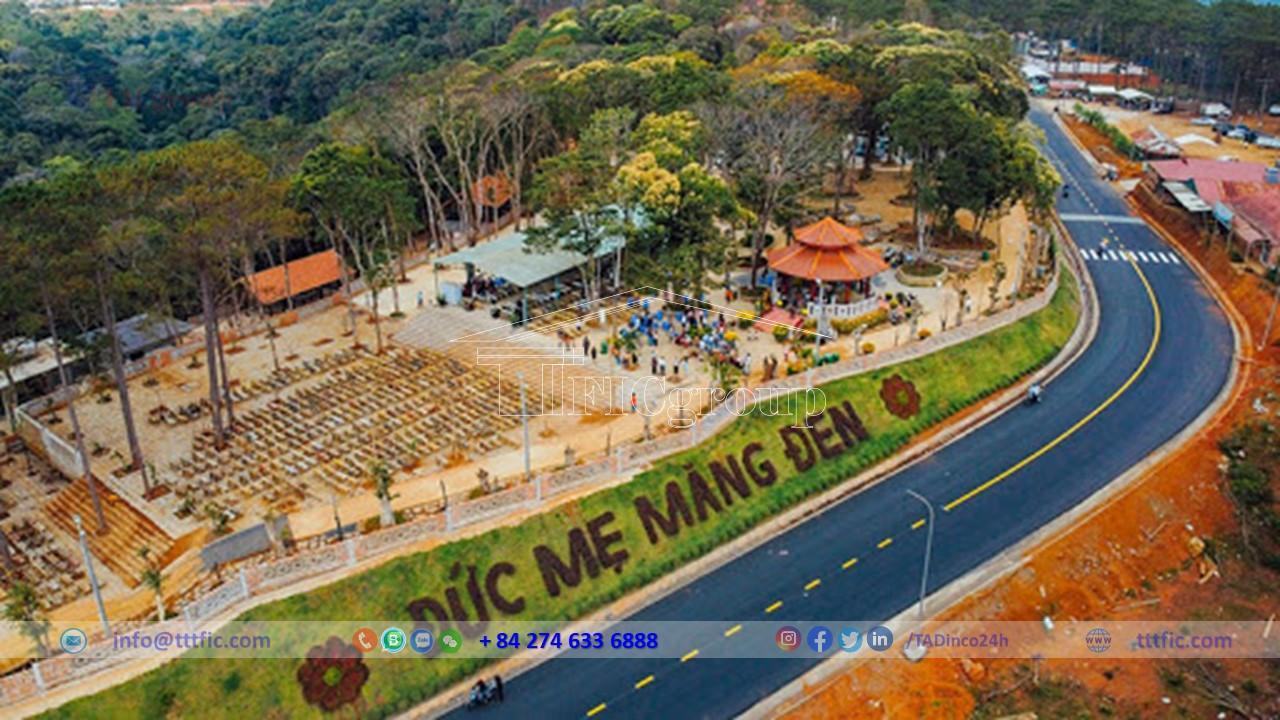
Community-based tourism in Kon Tum is developed to showcase the cultural values of the community, benefiting the locals and managed by them. Despite witnessing positive socio-economic changes in recent years, Kon Tum province still falls behind other regions. This can be attributed to several factors, including outdated production practices and the prevalence of nomadic lifestyles. Encouraging local involvement in community-based tourism helps improve livelihoods and bridges the gap between minority ethnic communities and the world. With proper training, locals gain an understanding of their cultural heritage. This understanding positions their culture as a tourist attraction. Consequently, there is a heightened focus on protecting tourism resources. Additionally, it contributes to the preservation of local livelihoods and cultural environments.
The Department of Culture, Sports, and Tourism has recognized four villages in Kon Tum as community-based tourism destinations. These villages are:
– Kon Klor Community Tourism Village in Thang Loi Ward, Kon Tum City.
– In Dak Ro Wa Commune, Kon Tum City, there is the Kon Ko Tu Community Tourism Village.
– Kon Pring Cultural Tourism Village in Mang Den Town, Kon Plong District.
– Kon Trang Long Loi Community Tourism Village in Dak Ha Town, Dak Ha District.
Visitors can engage in various activities with the local indigenous people, experience local cuisine and traditional dishes, and purchase souvenirs within these villages.
Kon Tum is an emerging industrial province in Vietnam, known for its diverse natural landscapes and rich cultural heritage. The province has made significant progress in agriculture, industry, trade, and tourism, thanks to advanced technologies, improved infrastructure, and human resource development. Kon Tum has enhanced agricultural productivity, expanded crop cultivation and livestock farming, and implemented sustainable practices. The industrial sector has experienced notable growth, with increased production and investment in modern technologies.
The province has actively promoted trade and services, leading to higher retail sales and tourism revenue. Kon Tum also prioritizes community-based tourism, showcasing cultural values and preserving the environment. The province has witnessed a remarkable increase in investment, contributing to its economic growth. Kon Tum possesses a favorable investment climate and offers attractive incentives. As a result, the province is positioned to emerge as a significant player in Vietnam’s industrial landscape. This development presents abundant opportunities for economic growth, investment, and tourism.
Table of contents

